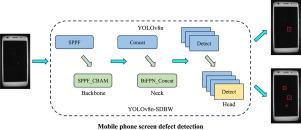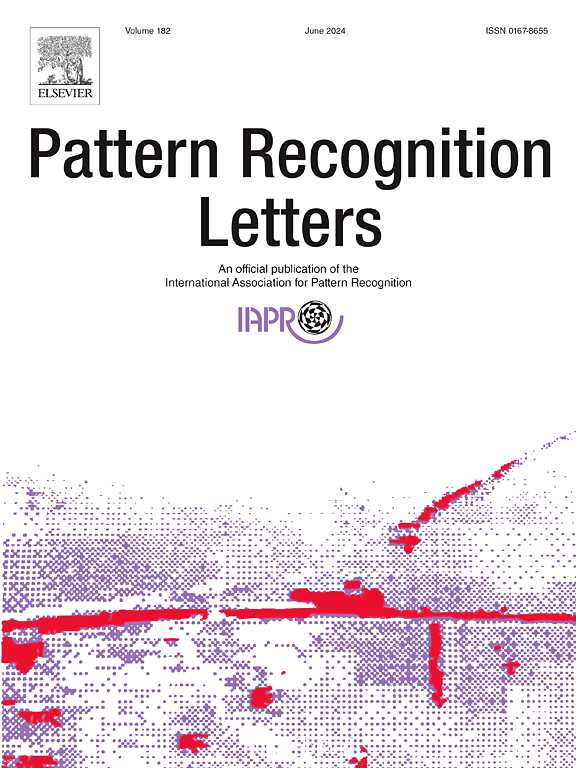基于改进YOLOv8n网络的手机屏幕缺陷检测
IF 3.3
3区 计算机科学
Q2 COMPUTER SCIENCE, ARTIFICIAL INTELLIGENCE
引用次数: 0
摘要
科技的不断发展使得手机成为人们生活中不可缺少的一部分。废旧手机屏幕具有重要的回收利用价值。然而,影响屏幕的三种最常见的缺陷——油污、划痕和污渍——对屏幕的修复效果有很大的影响。针对传统缺陷检测技术精度不理想的问题,本文提出了一种基于增强YOLOv8n网络的手机屏幕缺陷检测方法。此外,还设计了一种移动电话屏幕缺陷检测装置,以方便检测过程。增强模型在SPPF模块中加入CBAM注意机制,增强了模型的多尺度特征融合能力。此外,还增加了小目标检测层,以提高尺寸小、对比度小的缺陷的检测精度。此外,为了提高特征金字塔网络的性能,集成了BiFPN模块,便于多尺度信息的捕获。最后,通过将CIoU损失函数替换为WIoU来解决CIoU损失函数缺乏动态聚焦的问题。实验结果表明,与YOLOv8n相比,YOLOv8n- sdbw在模型参数和复杂度保持最小增加的情况下,提高了mAP@50: 0.83%,提高了mAP@50:95,提高了2.09%。本文章由计算机程序翻译,如有差异,请以英文原文为准。

Mobile phone screen defect detection based on improved YOLOv8n network
The continuous development of science and technology has led to mobile phones becoming an indispensable part of people’s lives. The screens of used mobile phones have significant recycling value. However, the three most prevalent types of defects affecting screens—oil, scratches and stains—have a significant impact on the efficacy of their recovery. In light of the suboptimal precision of conventional defect detection techniques, this paper proposes a mobile phone screen defect detection method based on the enhanced YOLOv8n network. Additionally, a mobile phone screen defect detection device has been devised to facilitate the detection process. The enhanced model incorporates the CBAM attention mechanism within the SPPF module with a view to enhancing the multi-scale feature fusion capability of the model. In addition, a small target detection layer has been added with a view to enhancing the detection accuracy of defects that are small in size and contrast. Furthermore, the BiFPN module is integrated to enhance the performance of the feature pyramid network, facilitate the capture of multi-scale information. Finally, the issue of the lack of dynamic focusing of the CIoU loss function is addressed by replacing it with the WIoU. The experimental findings demonstrate that, in comparison with YOLOv8n, YOLOv8n-SDBW exhibits a mAP@50 enhancement of 0.83% and a mAP@50:95 improvement of 2.09%, while maintaining a minimal increase in model parameters and complexity.
求助全文
通过发布文献求助,成功后即可免费获取论文全文。
去求助
来源期刊

Pattern Recognition Letters
工程技术-计算机:人工智能
CiteScore
12.40
自引率
5.90%
发文量
287
审稿时长
9.1 months
期刊介绍:
Pattern Recognition Letters aims at rapid publication of concise articles of a broad interest in pattern recognition.
Subject areas include all the current fields of interest represented by the Technical Committees of the International Association of Pattern Recognition, and other developing themes involving learning and recognition.
 求助内容:
求助内容: 应助结果提醒方式:
应助结果提醒方式:


